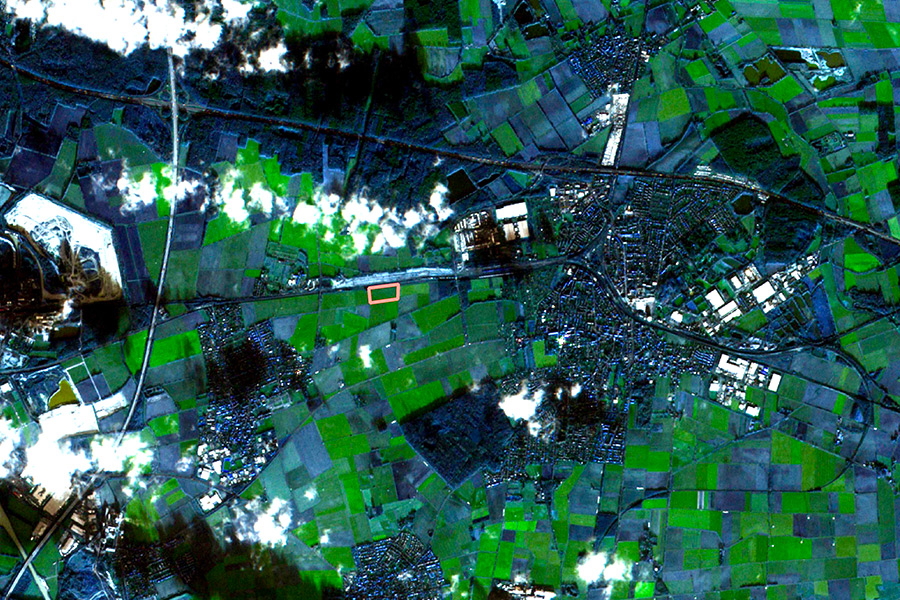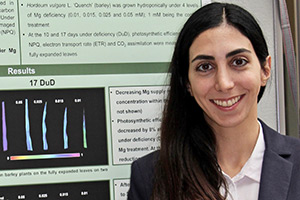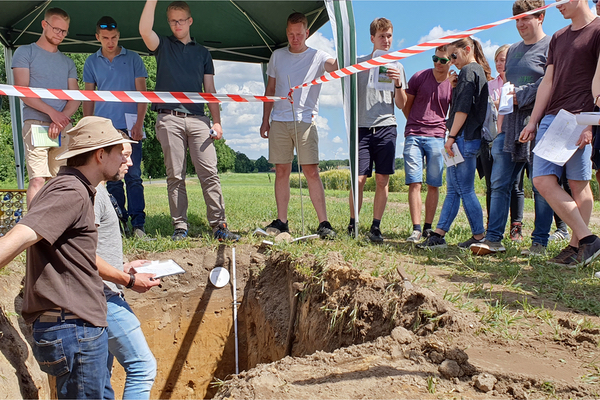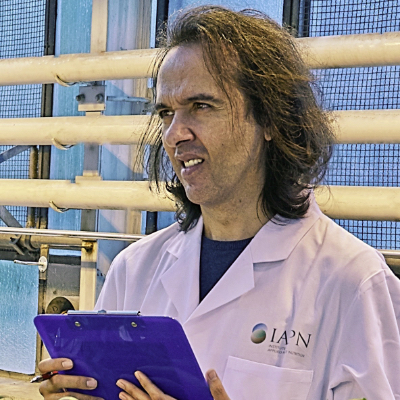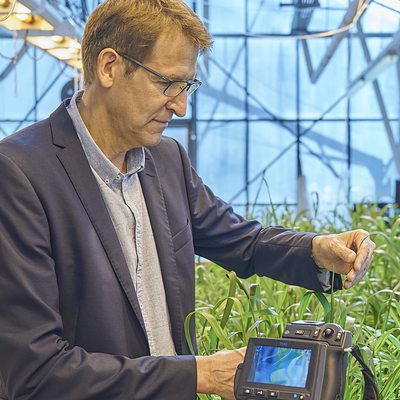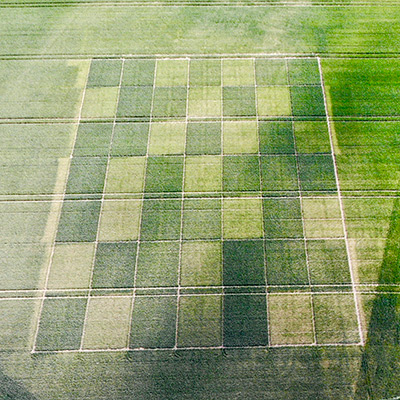Research
The project’s main goal is to understand the plant response to Mg fertilization, namely on plant growth and development, using remote sensing combined with field measurements. A field with inherently low soil Mg status was selected for studying the development of winter wheat (Triticum aestivum) and spelt (Triticum spelta).
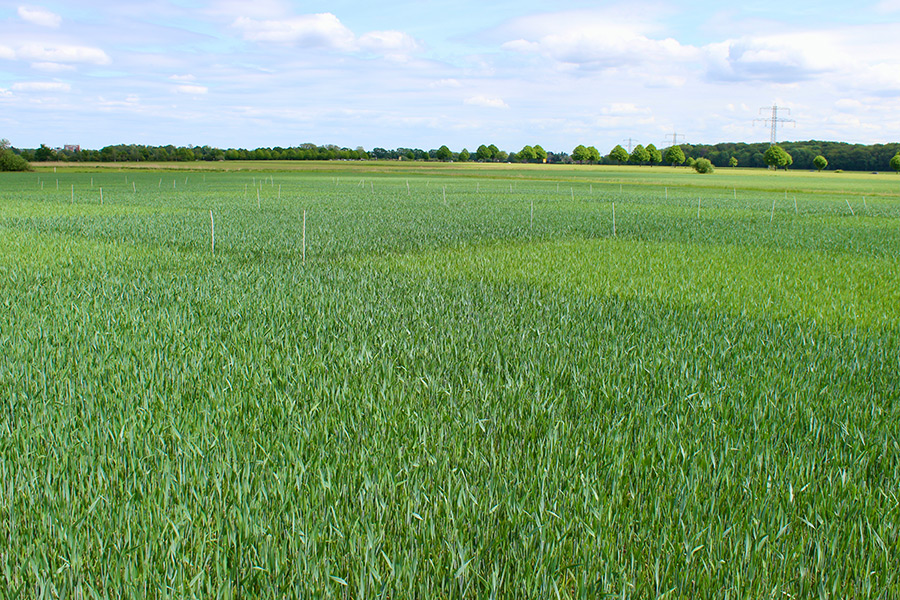
Remote sensing trial with spelt on a field in Ahlten, close to Hannover, that had a naturally low magnesium (Mg) status. The trial was conducted in order to analyze the effects of Mg deficiency on photosynthesis as well as water-use efficiency and the consequent hindrance on plant growth and development. (Photo: Cabrita)
Growth and properties were monitored and surveyed at specific times until harvest. Field data collection and satellite imagery (WorldView-3 Satellite) were scheduled at specific dates, complemented with weather and phenological data.
Field work involved gas exchange measurements, leaf reflectance measurements (field spectrometry), leaf sampling for subsequent analysis on pigments (chlorophyll, carotenoids, and anthocyanins) and Mg concentrations of plant material. The increase in the amount of leaf pigments observed shortly after Mg fertilization is mostly due to increases in biomass and leaf area index, agreeing with what is called Mg-induced N uptake. Leaf pigments, specially at early developmental stages, do not seem to be good indicators of Mg content in plant leaves, most probably due to their diverse physiological role.
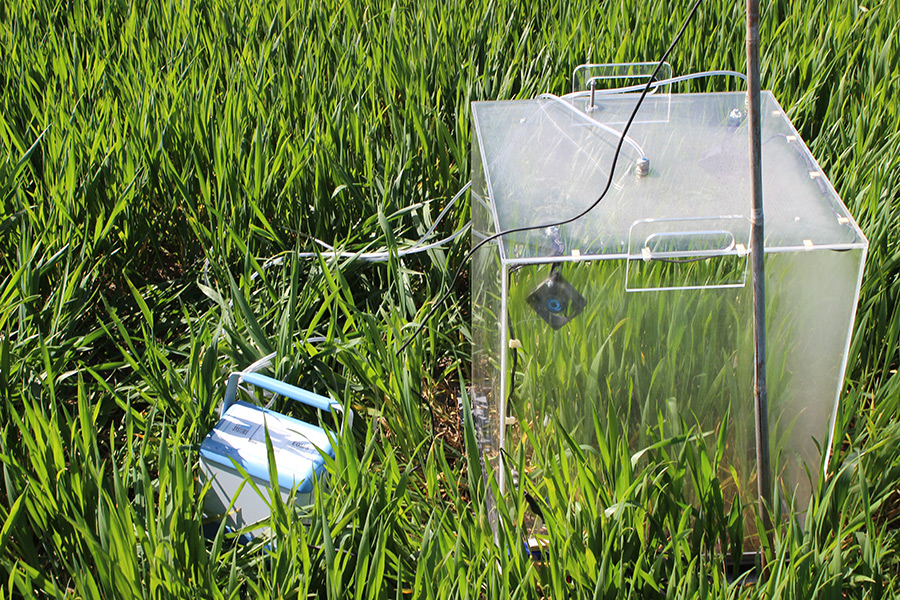
The portable gas exchange chamber is used to measure the water-use efficiency of canopies in the field. An infrared gas analyzer (EGM-5, PP Systems) is used to record CO2 and H2O fluxes due to plant uptake and evapotranspiration, respectively. To hermetically seal the system during measurements, the chamber is placed on soil frames which are installed in the beginning of the vegetation period. (Photo: IAPN)
The application of high-resolution satellite images proved to be a very useful method to monitor not only plant development, but also physiological and morphological responses to Mg fertilization, which can be used in precision farming. First results were presented as poster contribution at the conference of the German Society of Plant Nutrition “Plant Nutrition meets social expectations of sustainable plant production”, in Berlin, September 2019.
Part of this project was conducted in cooperation with Dr. Stefan Erasmi, formerly from the Cartography, GIS and Remote Sensing Section from the Institute of Geography, University of Göttingen. Part of the planned field work was carried out by Christian Elm, former Master’s student at the Faculty of Agricultural Sciences, and Jana Lorenzl, former Bachelor’s student at the Faculty of Geoscience and Geography, as part of their theses.




